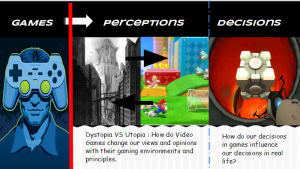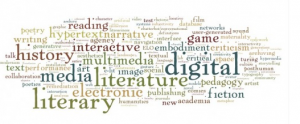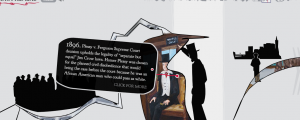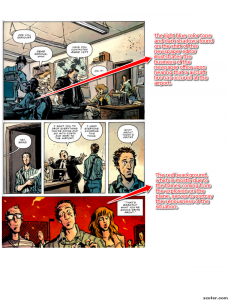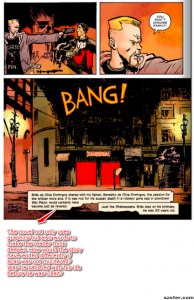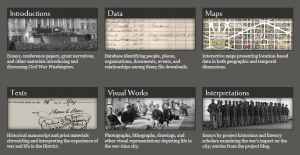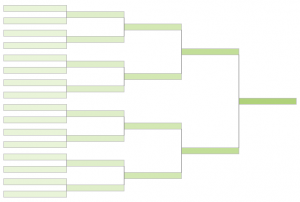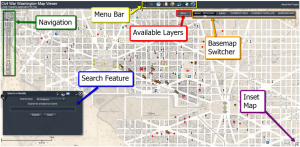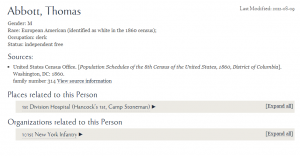Author: Zhan Wu Page 1 of 2
At the dawn of the 21st century, the advancement of the internet has resulted in the emergence of social network media such as Facebook and Twitter, which successfully served as an interactive and communicative platform for millions of internet users. Rick Moss, in his novel Ebocloud [1], boldly explores futuristic possibilities of social media development and the its potential consequences and societal implications.
The novel Ebocloud assumes that all future social media outlets have been amalgamated into a single entity, or so-called “social singularity” if you will. This singularity, named Ebocloud itself, utilizes an altruism-reciprocation award system to encourage the forming of extremely close online communities. The system works in that if someone registers as a new ebocloud user, he/she will be automatically and randomly assigned to an “ebo-family”, with family members called ebocousins, and receive reward points, named “kar-merits”, for helping them in times of need. This idea might sound innocent and positive at first, but ultimately has to be more deeply scrutinized to truly interpret its inner, more abysmal meanings.
The story’s plot follows Ellison Luber, a NY artist, who is trying solve the mystery of his girlfriend’s attempt to kill him by setting his apartment on fire, and who enlists several of his ebocousins to help him out. During the ongoing story, the narrative goes deeper into the Ebocloud relationship system and questions how this omniscient medium created for humanitarian and utopian purposes might have a darker and sinister side to it. Ellisons quest for solving the mystery of a possible case of pre-planned murder eventually refolds into a adventure for understanding the “powers and promises” [2] of Ebocloud.
Rick Moss’s idea about Ebocloud is certainly extremely intriguing and not so far-fetched from reality given the numbers of social network websites nowadays. Ebocloud, by providing rewards for each ebocousin by helping other ebocousins, virtually applies the model of reciprocal altruism, formulated by behavioral psychologist B.F. Skinner in the twentieth century. The constant application of this psychological approach can lead to close-knit communities with extremely intimate ties and opinions (i.e. each ebocousin regards the other as a well-known and trusted friend, if not family). Ebocloud, therefore, attempts to form a so-called “collective consciousness” by gathering massive amounts of people and creating tribal identities within each ebo-family.
The power of Ebocloud is not overstressed if it has the ability to truly assimilate every human being, or most people for that matter, into its cloud system. In fact, the powers of a single collective community is most often portrayed in modern science fiction movies, such Star Trek and Aliens. In Star Trek, for instance, human’s most bitter enemy, the Borg, are all controlled by a single mind, the Borg Queen. All the different physical Borg entities are thus psychologically bonded together. The idea that everything can merge into a single entity, is scary for most people, yet in this era of high technological advancement this prediction of a possible future should be seriously discussed. What would happen to privacy if we all shared an extremely close space with each other? What can be done to prevent this technology from falling into the wrong hands? These ethical questions and many more should be comprehensively considered even before the appearance of such technology.
Sources:
[1] Ebocloud, http://www.ebocloud.com/. Accessed Nov. 17, 2013.
[2] Ebocloud, A Novel About Social Singularity, http://singularityhub.com/2011/02/07/ebocloud-a-novel-about-the-social-singularity/. Accessed Nov. 17, 2013.
[Abstract]
The gaming market has been continuously spiking as computer and digital devices emerged around our lives from the 1980s till now. The exponential increase in video game companies has led to a boom in players as well. Video games, compared to its first emergence, seem to play a much bigger role in our lives now, and still little do we know about how such a potential medium could influence our thoughts.
This project aims to investigate the different genres of videos-games, such as action-adventure, role-playing (RPG), strategy games etc. and seeks to compare and contrast how these games, set in virtual (digital) worlds, subconsciously alter our perceptions and decision-making process in the real (physical) world. The project will first attempt to boldly recontextualize the setting, plot and characters in various games to illustrate the societal impact if people acted exactly like video game characters. Subsequently, to comprehensively and specifically discuss the impact of games in our lives, numerous attributes of games, such as linearity versus non-linearity, sandbox versus just narrative, will be scrutinized. Game samples that are representative of each attribute will also be taken into account. By making these concrete analysis, the project attempts to ask the reader: How do different game genres and game styles change our perspectives in our real world?
Last but not least, the project seeks to research how subconscious perceptions of the physical world is different for a person who is playing a game (controlling the protagonist and making the decisions) and for a bystander who is watching a game. To minimize error, the same part of a game (genre and attribute to be determined) will be presented to the player to play and remediated as a video for the “watcher” to watch. This interesting comparison will give us a glimpse about how interactivity/interpassivity of video games encompasses potential societal implications.
The end of the 20th century saw a huge advancement of digital technologies. Hand-written letters, hand-held books, etc., though not totally eliminated from use, were slowly becoming obsolete. The digital and virtual era was approaching as mankind strove in technological evolvements such as computers, cell phones, and the construction of a widely shared virtual network: the World Wide Web. With this tremendous impetus in the time of seemingly incessant new inventions and breakthroughs, the academic disciplines had to majorly adjust, redefine and even reform many of their expressive ways and methods. The digital humanities were created, which relied on computational technology to virtually “copy” the many words written on books to operation system file formats such as doc., pdf., html, and the list goes on, while simultaneously adding elements that were never possible before: videos, augmented pictures and plots etc. As the 21st century beckoned, people become increasingly inventive and constructed a new form of expressionistic art form: electronic literature, or E-Lit. E-Lit was only able to be construed because the transformation of the millennium generated even more “high-tech” computational technology. Software as well as hardware became more and more sophisticated and more intricate software programming software gave rise to complex games, rendering utilities and so on, which E-Lit readily utilized as one of its manifold forms of expressions.
One element that sets E-Lit apart from the digital humanities and other written pieces is that E-Lit itself does not necessarily need verbal expressions. In layman’s terms, E-Lit might have no words in it, but still be a piece of literature. This is a very important aspect to realize before analyzing any electronic literature pieces. Admittedly, most people would think about a written book or anything in alphabetic words or characters when asked to define literature. Our propensity to connect the word literature with written elements actually constraints us from constituting a more comprehensive picture of this sort of art. N. Katherine Hayles, in her book Electronic Literature: What Is It?, specified E-Lit as “digitally born…[and] digital object created on a computer and (usually) meant to be read on a computer”. (Hayles 3) She also indicated that electronic literature pieces might have “no recognizable words, [but might have] important visual components [and] sonic effects…”. (Hayles 4) In class we have extensively discussed the basic elements and inner meanings that are representative of typical E-Literature pieces. Additionally, we have scrutinized many examples of E-Lit pieces on the internet such as MUPS (digital augmentation system), SKIN, City Stories, and the Xenotext Experiment, which “takes programming language and practices into account” (Hayles 28).

The Xenotext Experiment aims to use computational software to code/decode written words into DNA sequences.
One E-Lit piece that I appreciate most was The Knotted Line, which utilizes actual miniature painting created in the 17th-19th century along with a digital timeline to explore the historical relationships between freedom and confinement and the question about how freedom is measured. The general E-Lit was extremely well-constructed. If the program launches successfully, the user will be brought to an all-black colored timeline which shows the “beginning” of American history, or the many confirmed accounts for that matter. The user can then use the mini-map of the timeline, a unique “navigation scheme” (Hayles 7), at the top right corner of the browser to get to the desired time period. The user interface was fraught with game elements. In order to know more about the happenings of a specific famous historical moment, one must move the mouse several times on the black lines of the timeline to virtually “cut open” the timeline, which will subsequently reveal the miniature paintings as well as a very short (usually 10~30) word description of the specific historical time period in America.
In light of Hayles’s interpretation of E-Lit pieces, The Knotted Line fits perfectly into the definition of electronic literature. That is, the piece comprises of as little words as possible, while making up the lack of written elements through stunning visual displays, interesting and explorable game elements, and backdrop sounds to create the ambiance needed to truly appreciate this great workpiece. Through its impressive visual and sound interface, we can clearly see that The Knotted Line uses them dexterously in setting the mood and tone for the things it wants to show. The whole piece, in terms of literary elements, also incorporates numerous themes such as American Slavery history and the fear and isolation of the American society from foreigners and the differently-cultured in the 19th and 20th century (i.e. 1882 Chinese Exclusion Act/ internment camps for Japanese Americans during WWII). Though not extensively clear, the Knotted Line also implies its question of freedom/confinement by telling a historical narrative of the subject matter.
In many aspects, The Knotted Line can be considered as a piece of interactive fiction, though most of its accounts are historically accurate. Hayles claims that “interactive fiction (IF) differs from [other] works…in having stronger game elements….The demarcation between computer games and electronic literature is far from clear…, many works of electronic literature have game elements.” (Hayles 8) The form of expression, that is, using a timeline to document a narrative of freedom and confinement of American history, plus adding game facets such as mouse dragging to it, makes the piece a work of E-Lit that can immensely augment the American history reading experience by giving a graphical and tonal view of slavery and isolationism, thus helping the reader to understand history more thoroughly.
In conclusion, the Knotted Line utilizes various visual and sonic elements, which are highly representative of typical electronic literature pieces, to create a website that is both entertaining, composing of many small yet delightful game elements, and educational, researching and scrutinizing the relations between freedom and confinement while asking questions to make the “reader” think deeper into the subject. As Hayles would have it: Electronic literature “make much fuller use of the multimodal capabilities of the Web”. (Hayles 6)
Sources:
[1] Hayles Katherine N., Electronic Literature: What Is It?, http://eliterature.org/pad/elp.html. Accessed Nov. 3, 2013.
[2] The Knotted Line, Electronic Literature piece, http://knottedline.com/. Accessed Nov. 3, 2013.
Graphic novels are a unique form of literary expression that has emerged as a popular way to narrate stories. In class we have discussed the novel “Daytripper” by Ba and Moon. The story revolves around the live of Bras de Oliva Domingos, who works as an editor for obituaries at a newspaper office in Brazil. Each chapter in the novel tells a story of its own about a different time in Bras’s live, and many of them are not chronologically ordered. The images in the novel utilize different tones of color to semi-consciously convey the story’s gravity, emotions, and meanings to the reader. The following are some representative graphical annotations that illustrate this fact.
The most spectacular aspect of the graphic novel is that the chapters would always end up in Bras’s death, with the subsequent chapter narrating what would have happened if he did not die in the previous chapter. Ostensibly, the book suggests that we ought to be careful in our lives as best as we can since accidental happenings and possible death could always be around the corner at any time. This is quite apparent, since Bras dies from car accidents, drowning, murder, electrical shock etc. in the novel. On a deeper and more analytical facet, however, the novel encourages the reader to reflect on his/her own life. Though one might not notice it immediately, the novel attempts to subconsciously immerse the reader into understanding its deeper meanings. What would change if I died today? How will the lives of other people be influenced by my death? Will I live my life to its full potential before I die? Will I be satisfied by what I have done before I die? Will there be any regrets?
The most intriguing example in the book about the impact, both emotionally and physically, about a friend’s death can be seen by Bras’s reaction when he realizes that Jorge might have been killed in a plane explosion. In fact, Bras becomes so emotional about thinking of Jorge that even the obituaries he constructed for other people were actually written about his friend.
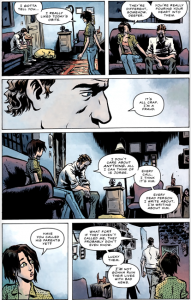
Emotional Bras immersed in pain and depression of the possibility of having lost his best friend Jorge.
In a nutshell, Daytripper not only stunned me with its outstanding pictorial art, but also provoked my thoughts about the meaning of life and death and the impact a sudden change in life can bring to myself and the people that care about me.
After reading Chapter One on the book of Media Archaeology [1], written by Jussi Parikka and subsequently attending a symposium with the same person on Friday, I gained a more comprehensive understanding about media effects in our society, specifically, how the nature of a medium influences us as well as our environment.
One element that Dr. Parikka was talking about during the symposium which I especially liked was the impact, both deleterious and benign, of the physical essence of media in our lives. In terms of ourselves, our habits are concretely shaped by repeated utilization of the same form, or physical essence, as Parikka dubs it, of media. For example, having read more hard-copied books back during childhood, we simultaneously grew more accustomed to the presence of written media that we could touch and hold. Thus it is not surprising that most of us find it more comfortable and maybe even more reasonable to obtain a hard-copy of specific media, whether that be a newspaper, manual, textbook etc., rather than perusing said media on digital devices, such as PCs, laptops, and tablets.
Additionally, detrimental effects of the physical essence of media can be seen by environmental influence, specifically the creation of “dirty energy”, some mediums create in our world. Dr. Parikka talked about how an old watermill in his hometown in Finland got converted into a Google Data storage, and how the storage used hydroelectric energy as well as other forms of power sources to operate on a full scale, possibly polluting the ecosystem at the expense of creating more digital data “clouds” for Google users. Thus, we can see that the transmission of media, often considered invisible, often has an apparent physical essence to it. This physicality of media is also expressed in Neuromancer, where both hardware and software are abundant in the cyberpunk world.
Another very interesting aspect brought up by the authors during our discussion session was that whether a medium would become well-known or obsolete in mostly dependent on accident, which means that the fate of a medium customarily happens by accident, and cannot be physically manipulated into any direction. A classic example is the introduction of SMS text messaging in Europe, with phone companies at that time advertising the many advantages of text messaging. What the companies didn’t realize, however, was that the rapid proliferation of texting was not due to people’s recognition of it as a more advantageous method of remote communication than phone calls or other media, but that texting was simply cheaper and a better way to save money for households. This piece of history strongly demonstrated that how well-known a media can really become happens mostly accidentally.
The graphic-novel Daytripper that we will read and discuss this week in class presents some additional insights into media archaeology by furnishing different accounts of alternate history.
Sources:
[1] Parikka, Jussi, Media Archaeology. http://www.ucpress.edu/book.php?isbn=9780520262744. Accessed Oct. 16, 2013
In the early 1900’s, complex electric circuits came into being and boomed with the help of inventions such as the Edison’s tinfoil dictation machine, light bulb, and Bell’s telephone. Half a century later, the late twentieth century ushered a new information era with the inventions of the computer, internet and advances in telecommunication and digital data transfer systems. Although it is irrefutably clear about the technological significance and the rich potential legacy the first emerging computer has left mankind, what would happen if a more primitive computer had been invented in the 1800’s, more than a century earlier? Would it change the information age as we see it now?
In their novel The Difference Engine , William Gibson and Bruce Sterling attempt to introduce us to exactly that kind of alternate history, specifically, a Great Britain in its Victorian age where Babbage actually manages to successfully invent the difference engine (computer). Gibson and Sterling, in the book’s settings, not only draw parallels to current technology and real people, such as surveillance systems, credit cards, Charles Darwin and “clackers” (hackers), but also delve into the imaginary aspects to give us a newer glimpse of other “more weird” inventions, such as the use of “punch cards” to program computing engines.
It is interesting to note that Gibson included many symbols and references that occur both in The Difference Engine and in Neuromancer , another novel where he defines the cyberpunk/cyberspace genre. Both books depict a society in which masses of people completely support and rely on fast emerging technology to live their daily lives. For example, in Neuromancer, almost all people can and do transfer between the real physical world and a digital cyberspace, whereas most people support a dominating Industrial Radical Party for rapid technology boom in The Difference Engine. There are, however, clear differences between these two as well. Neuromancer provides us with two domains, the real and the digital, which are bases on the 1980’s (when Gibson wrote his novel), whereas as The Difference Engine focuses more into historical aspects and educational guesses of an alternate piece of history that had not happened in real time.
Another aspect Gibson and Sterling delineate in The Difference Engine is that rapidly emerging new technologies causes intense industrial competition between countries. Those countries that cannot keep up with the fast pace of the information era will be eventually made obsolete. The novel implies this fact by exploiting on Japan’s rapid industrial rise in the twentieth century in real history. In the books settings, Britain aids Japan, who is desperate to boom to the point of even doing anything in return for the British, to become a leading nation in information technology and computer engines.
The Difference Engine, in a nutshell, gives us a comprehensive view into alternate history of early digital technological boom and its potential widespread effects on the industry and the society.
Sources:
Gibson, William, Bruce Sterling, The Difference Engine.
Is literature data? Yes and no.
From a layman’s perspective, no. The fact is that nobody except critics of digital humanities has ever seriously considered this question. We were all brought up believing that every literature piece we read and see, whether fiction, non-fiction, poetry or prose, is an artistic piece that reflects the author’s intentions, aspirations and quite possibly hidden philosophical ideas. To consider a literature piece just an accumulation of written language symbols, alphabetical letters, individual soundwaves or paint strokes seems absurd to many of us, and fairly so. Literature is in a sense not data because merely analyzing this art in terms of scientific means takes away the most significant aspects of a literature piece: the author’s artistic and creative elements. These factors just cannot be simply “measured” and summarized like it can be done with computer algorithms. In fact, a specific literature work might garner thousands upon thousands of different interpretations, each with it’s own unique analytic aspects, whereas data, with its ultra-clear structure and quantitative properties, might merely yield one result. Stephen Marche, in his critique Literature is not Data, even goes as far as to claim that “the story of literature [regarded as] data is a series of…failures.” [1] Therefore, in this perspective, literature cannot be stringently considered to be data.
We also, however, have to accept the fact that literature works, though fraught with myriads of interpretations, are on the very basic level still a construction of numerous individual aspects that ultimately come together, and that those aspects can be analyzed one by one for finding principle and relationships in a literature piece. Franco Moretti advocated the notion of “distant reading”, which means that we should not interpret written literature in terms of studying specific texts, but “by aggregating and analyzing massive amounts of data.” [1] This may seem a radical proposal, but it does have some meaning attached to it and is a valuable exercise to engage in. Literature pieces themselves have been segmented by people into parts in terms of their many meanings, such as different genres, chapters, settings, plot details, persons (protagonist, antagonist etc.), archetypes, symbols and the list goes on. Furthermore, as books and the like appear more prolifically around us nowadays, it becomes increasingly harder to read and analyze all written text. Data accumulation software and websites such as Google Ngram [2] and Understanding Shakespeare [3] have opened up opportunities for people to achieve their research objectives without having to skim through the information from piles of books. With these new abilities, the digital humanities and its many revolutionary aspects (i.e. distant reading) have practically “augmented” scholarship and reality alike by creating new paths for research, interpretation and exploration both for classical and newly-emerging literature works.
References:
[1] Marche Stephen, Literature is not Data: Against Digital Humanities, http://lareviewofbooks.org/essay/literature-is-not-data-against-digital-humanities/.Accessed Oct. 2, 2013
[2] Google Ngram Viewer, Google Inc., http://books.google.com/ngrams. Accessed Oct. 2, 2013.
[3] Understanding Shakespeare, http://www.understanding-shakespeare.com/. Accessed Oct. 2, 2013.
Very much from the occurance of colossal computers that filled rooms in the early 1970s to the ultrabooks super thin laptops we have nowadays, video games have existed to fill our needs for entertainment and maybe even learning. Video games have increasingly become sophisticated as newly operating software were produced and better-performing hardware were invented. Indeed, the digital information boom at the end of the 20th century engendered a series of ultrafast developments that led from the creation of multi-pixel 8-bit video games such as Pacman, to the open world non-linear games such as Grand Theft Auto, which take on several gigabytes on the computer’s hardware storage capacity.
With the sophistication and proliferation of games, people have engendered more complex and mixed reviews about them. Computer games were originally for entertainment for those very few who could afford computers only. As software became cheaper to manufacture, the word “PC” (personal computer) emerged, and families were already buying PCs and software (including video games) in numbers.
Before we go deep into the societal impact video games have for the generations around this time, a choice must be made of whether video games are mediums or not. A simple look-up in the dictionary tells us that mediums are “an agency or means of doing something.” Ian Bogost, in his book How to Do Things with Videogames, claimed that: “ games are models of experiences…we operate these models…our actions [are] constrained by their rules…we take on a role in a videogame, putting ourselves in the shoes of someone else…” (Bogost 04) Simply said, video games are a means for people to immerse themselves in information models to assume a role in a certain environment. Therefore, according to Bogost, (and I would strongly agree) video games are a medium.
It is not untrue that video games caused quite a dilemma for families in the 80s and 90s. In fact, many families reported that their children were virtually addicted to video games and did not put enough attention on the family. The problem persists till today as a main family and societal issue. This is also why “All-too-familiar questions arise about whether games promote violent action or whether they make us fat through inactivity.” (Bogost 05) In his bestseller, however, Bogost talks about how parents and people alike have simply misjudged video games as a dichotomous choice of good or bad, which he dubbed as the “media ecological approach”, rather than seeing games as a medium which is able to influence culture in numerous ways (microecology). I generally agree with Bogost’s idea. Games act as a medium by impacting people’s daily lives continuously, both in communication and perception. I will explore this along with examples in the next three paragraphs.
YouTube, a large video-sharing website as you might know it, has a very large gamer community. And many game commentators post game walkthroughs and reviews for the large audience on YouTube for a living. In fact, according to YouTube statistics, gaming commentators and reviewers alike will upload up to 75 gigabytes of video data to the website every ten seconds. Each gaming video might have more than a million comments (many of which the commentators rely to) and there are plenty of private discussion and public Q&A sessions. From this perspective, I believe that these videos undoubtedly have a large impact on the lives of millions of people who are watching the videos on a daily basis in terms of communication. Again, the gaming content of those videos are irrelevant compared to the impact the videos have on collective communication in gaming communities, as Bogost would have it: “The things a medium does to a culture are more important than the content it conveys.” (Bogost 04)
On the other hand, video games can alter our perceptions dramatically. How our perceptions are changed depend on the type of the video games and our perceived cosmopolitan view of the world. When engaging in video games, we are both acting out the role of the protagonist according to our general perception of the world while simultaneously abiding by the rules of the “model” (the gaming environment) that were created by the game developers.
A good example would be the Portal series created by Valve Corporation. The protagonist in the game is a test subject who has to navigate across numerous test chambers with her portal gun, which can created interdimensional space. Her goal is to flee the “unethical” testing facility, but is constantly stalled by the facility’s main AI computer, GLaDOS. Each test chamber is unique, and there are several ways to finish a particular level. It all comes down to how the video game player perceives the level. Also, there are many moral decisions to make in the game, further altering the gamers perceptions about certain aspects. In one level, for instance, after using the Companion Cube extensively, the player has to make a choice of whether incinerating the cube and pass the level or get stuck in the level with the cube. And it again depends on how the player perceives the game. In fact, many players on the Steam Community Hub reported feeling extremely emotional at that moment.
To acquire a more comprehensive view about video games in our society, we must think more critically about them, not just dismiss them as superficial objects that someone might get addicted to. Parents and families, along with other people who are in presence around video games, need to regard games as a medium which has multifaceted uses rather than only one or two. That said, games are currently used not only in entertainment, but also in medicine, psychiatry training sessions, tools for soldiers to simulate real combat and even placebo means in hospitals etc..In terms of communication and perception, as aforementioned, video games acts as an indispensable means to a medium by encouraging all sorts of discussions and perceptual alterations. The various uses of games cannot be overstated, and most of them have profound impacts in different sections of our society.
Last but not least, I definitely believe that it is vital for people to study gaming behavior. There are myriads of reasons for doing so. Social-cognitive psychologists could research brain pattern behavior when people are playing games. I personally have always wondered why people’s body do physical movements when they are actually playing games set in virtual reality. Furthermore, researching possible changes in perception of thought would be a great basis for developing our understanding of human behavior. The bottom line is, as games become more and more a part of people’s daily lives, the necessity to study them extensively is ultimately of extreme importance for the comprehension of human physical and psychological behavior to our community.
Sources:
[1]Bogost Ian, HOW TO DO THINGS WITH VIDEOGAMES, University of Minnesota Press.
[2]Portal, Valve Corporation, http://www.valvesoftware.com/games/portal.html. Accessed Sep.29, 2013.
Author: Zhan Wu
Partner: Xin Zhang
Civil War Washington DH Project URL: www.civilwardc.org
The following is a critique that will evaluate a DH project about various aspects of the Civil War in Washington. The critique will be using Shannon Christine Mattern’s “Evaluating Multimodal Work” [1] as a reference in establishing various evaluation standards.
To start off, one of the most evident things in this DH website project is the overall structure, which is visually very clear. The project utilizes “tiles” in its front page. Each tile is comprised of a title and a short overall description about what the reader can expect when opening the tile URL. Every tile also contains a picture within it so that navigation around the website becomes visually easier. There are more choices that the reader can select when opening specific tiles on the front page. Opening the “Data” tile, for example, will guide the reader to different, more specific subsections, such as People, Places, Events, Organizations etc. Clicking in turn on one of the subsection links will lead the reader to even more concrete contents in the web page.
The entire structure can be thought as a tree chart whereas one option engenders more options, which in turn give even more options and so on. This kind of structure is advantageous to scholars who intend to research on very specific facts about the Civil War in Washington without having to cram through unnecessary chunks of information. This also implies that the delivery system of the subject matter is very robust, meaning that the people making this project presented their information on the best possible platform-a website. A website enables random access to information, which is an advantage over media that use linear presentation of information, such as a paper.
The project uses tables, maps and pictures as its main media formats. Tables are generally utilized in the Data section and are there to list specific people, places and events related to the time. The use of tables in the DH project makes browsing through the information significantly easier. For instance, if the reader wanted to do research on the 3rd Division Hospital in DC during the Civil War, he/she would just need to go Data-Places, where there is a comprehensive list of important locations, and simply look up “3rd Division Hospital”. Search options are available and are a great add-on to the website if under any circumstances the desired content cannot be found by browsing visually through the lists and tables.
Maps are yet another media format and are a great feature on the website. There is a thorough description on how to use the map right under the Map section of the website. It sufficiently documents the specific functions of the menu bar and the search feature, and shows the reader how to navigate throughout the map (zooming in/out, changing layers, inserting more maps etc). There are symbols on the map that show various hospitals, churches, petition events and houses/apartments of renowned people at that time. One can also change map layers, which essentially gives the reader the option to either use a Washington map made during the Civil War or a contemporary DC map for the purpose of their research.
A downside of the project might be that the website only includes traditional media expression tools like tables and pictures, but fails to incorporate more contemporary media formats, such as videos, plots, or mathematical charts. Granted, the project encompasses an online map that can be manipulated to a vast extent (described above), but those “traditional scholarly gestures” (Mattern n.d.) still far outweigh modern media formats. Therefore, adding more of said media would greatly increase the value, gravity and reliability of the information presented.
The data in this DH project is very much contextualized. Every piece of data, when opened, is automatically related to another most relevant data piece. This is most evident in the Data section. If the reader searches for a specific person, he will immediately be informed about the places, organization and events related to that person. The most relevant information is often provided in URL links to give the reader the opportunity to do further research on that aspect. Clicking on the “Abbott Thomas” link in the People section, for instance, the reader will be furnished with the most relevant information such as gender (male), race (European American), occupation (clerk), status (independent free) as well as places (1st Division Hospital) and organizations (101st New York Infantry) related to Thomas. These interconnections of data reflect to a certain extent that the participants of the project made controlled and deliberate decisions of the technology (in this case the website and URLs) they were using and also tells us that the information presented is not fabricated but strongly related to the context of the Civil War.
Furthermore, the project itself has an “About” page and a FAQ section which document how the participants in this project created the website, how research into the subject matter was funded and what educational institutions were mainly contributing to the research and documentation of the data in the project. The web page creators have also paid meticulous attention to separating these kinds of information (About, FAQ, Participants etc.) from the actual research documentation (People Events, Organizations of DC during the Civil War) by putting the links of the former at the lowest part of the web page with a different background color, clearly separating the two parts.
Almost all of the participants that contributed to the formation of this project are consultants, research associates and research assistants, with only minor numbers of graduate students and no undergraduate students. It is regrettable that this project did not employ more student participation, however this doesn’t mean that the historical information provided by the project is only targeted for a strictly professional audience. In fact, kudos should be given to the creators for attempting to address one of the most important events in US history with documentations that are not only accessible to professional scholars, but also easily readable by a wide audience, including students and even amateurs. Additionally, the whole project is a good model for future project directors to refer to when developing their own project.
Last but not least, the project gives credit where credit is due. Every citation is appropriate and contains several URLs to the source where the information was gleaned. Credits and full descriptions of all the collaborators are also presented in the “Participants” section of the website. The website link www.civilwardc.org itself is an extremely straightforward link and provides other authors easier ways of citing the materials presented in the project.
In conclusion, I believe that the project is well established, sufficiently researched and annotated and shows numerous signs of the authors exercising control over their web page technologies. The project will surely stand out if those minor drawbacks mentioned above can be amended and remodeled.
Sources:
[1] Mattern Shannon C..Evaluating Multimodal Work, Revisited.
http://journalofdigitalhumanities.org/1-4/evaluating-multimodal-work-revisited-by-shannon-mattern/

